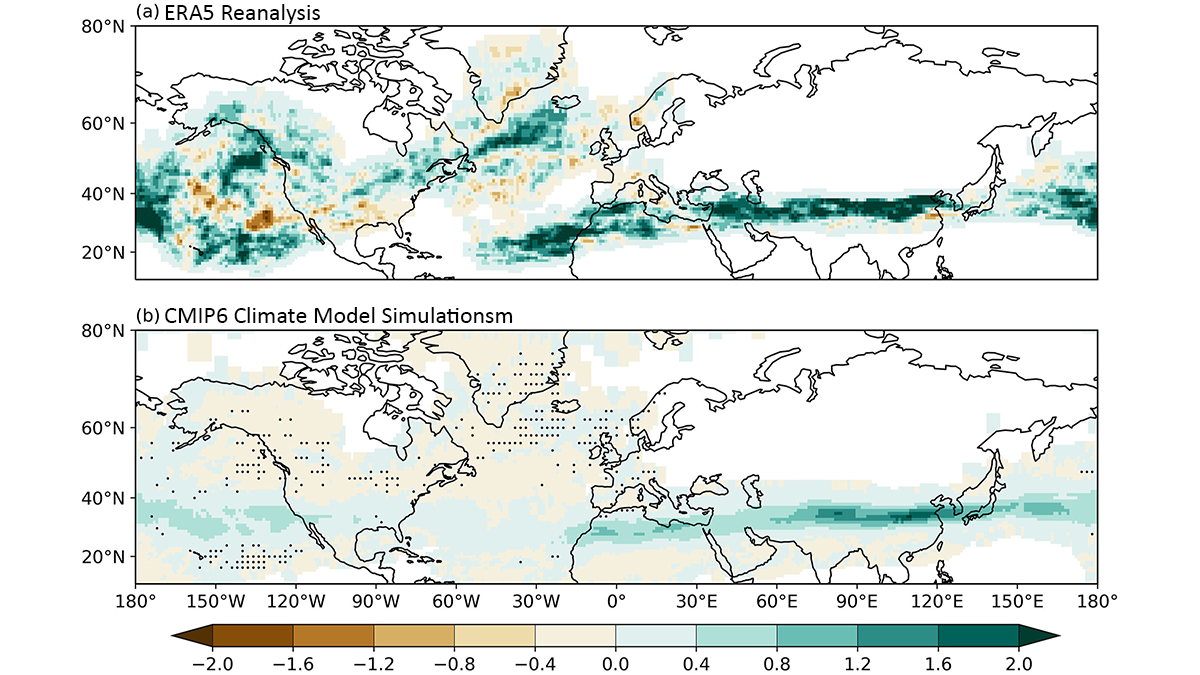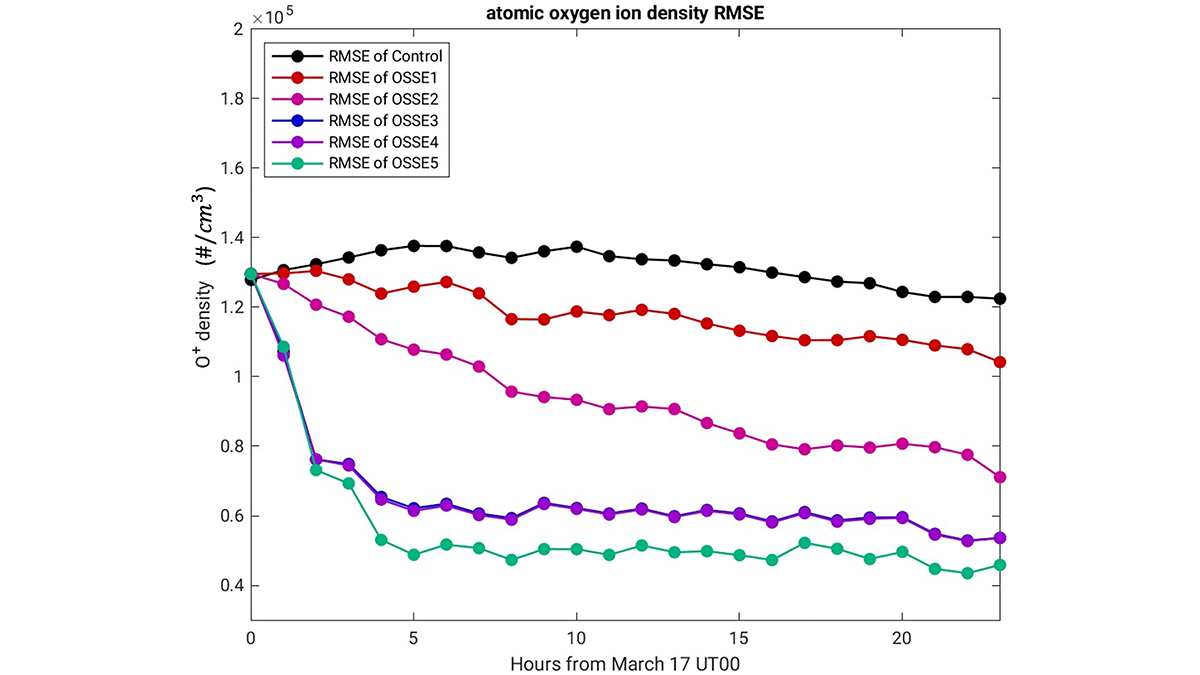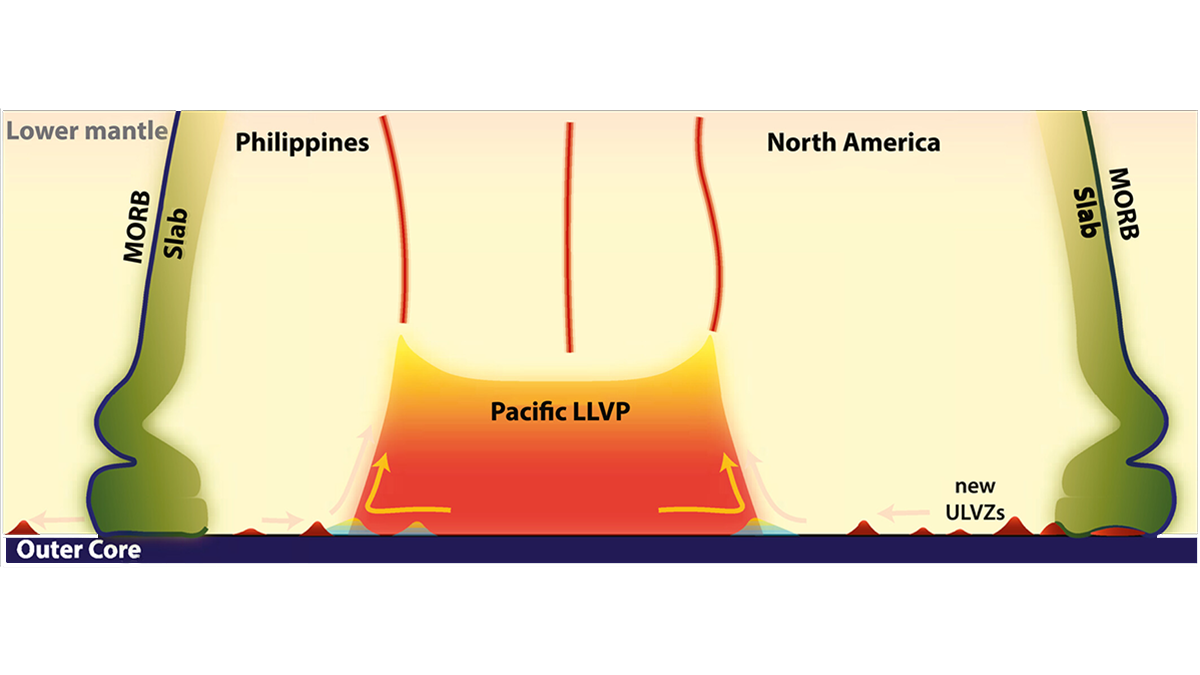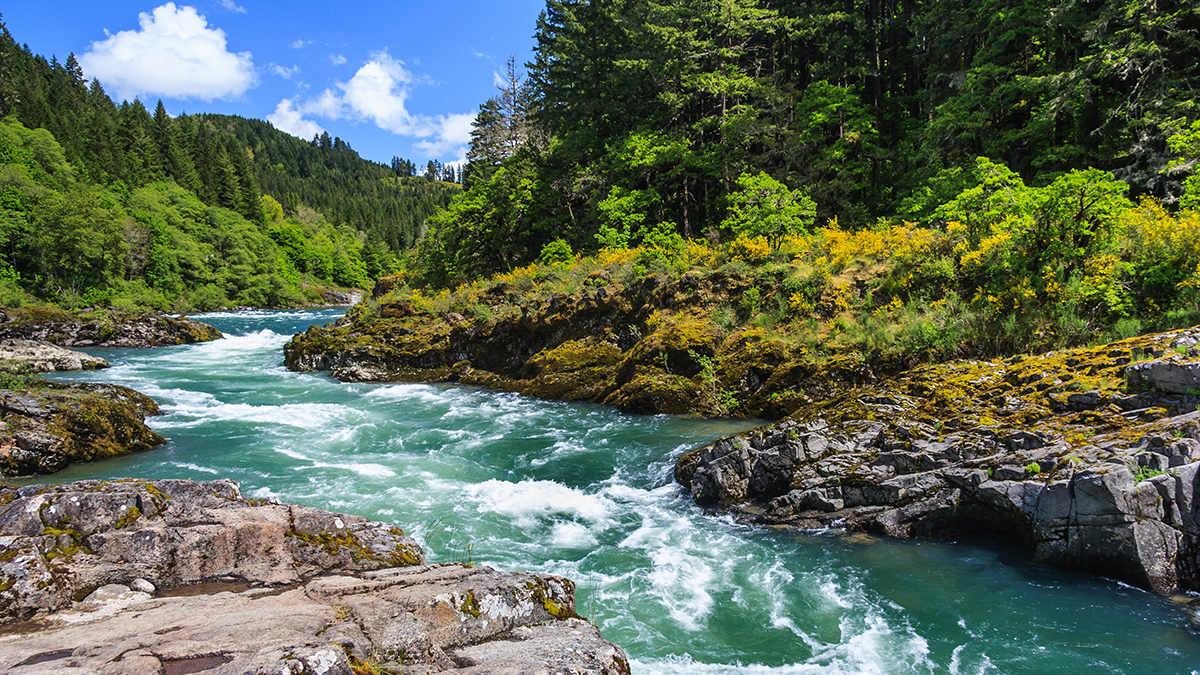A new method improves growth rate estimates of carbon dioxide increase in the atmosphere by combining the standard NOAA approach with satellite data.
Editors’ Highlights
Past and Future Changes in Atmospheric Clear-Air Turbulence
A new study evaluates long-term changes in atmospheric clear-air turbulence based on meteorological reanalysis and climate model simulations.
Impact of NASA’s GDC Measurements on Predicting Earth’s Upper Atmosphere
A new study finds that assimilating observations of the ionosphere and thermosphere reduces the error in model predictions more than modeling either one individually.
Crustal Melts at the Core-Mantle Boundary
Seismic waves get sent in all directions for deep mantle anomalies, and a new analysis shows where those scatters lie and what properties they have.
New Method Reveals Hidden Structures in Clear-Sky Vertical Motion
High-resolution satellite data reveal unexpected, highly heterogeneous vertical motions in the clear-sky atmosphere, with a new method proposed for measuring these motions.
As the River Flows the Colors Sparkle
Diving into the science behind river color and its relationship with flow.
New Moonquakes from Old Data
Almost 50 years after they were turned off, the Apollo seismometers still have secrets to reveal.
Buffering by Ammonia Sustains Sulfate Aerosol Production
A new method for evaluating the role of multiphase buffering and acidification reactions on aerosol pH finds that the buffering effect sustains sulfate production from high pH-favored multiphase reactions.
Equation Discovery for Subgrid-Scale Closures
Machine learning can discover closure equations for fluid simulations. A new study finds that common algorithms rediscover known, unstable closures, which can be stabilized with higher-order terms.
Unveiling the Origins of Dome Craters on Ganymede and Callisto
Large craters with broad central domes are a unique crater morphology on Jupiter’s largest icy moons: Ganymede and Callisto. A new study examines how remnant impact heat may lead to their formation.










